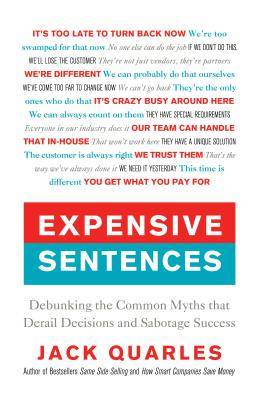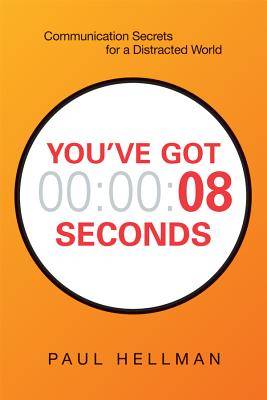

“Expensive Sentences – Debunking the Common Myths that Derail Decisions and Sabotage Success” by Jack Quarles (Ideapress Publishing, $24.95)
How often have you used or heard: “It’s too late to turn back.” “They’re the only ones …” “We have to act now to lock in the price.” Clichés like these proliferate in business decision-making. Their real meaning can be summed up in three words – stuck, special and scarce. They’re expensive words because they place limits on opportunities. Stuck tells us that “we can’t do certain things.” Special tells us that “someone or something is outside the rules that apply to others.” Scarce tells us that “there’s not enough of something we need.”
Let’s put some of these into real-time context:
▶ 1. Stuck – The cost of refusing to change course. There comes a point where realization (i.e., the dog won’t hunt) must trump expectation. Wasting time, people and money on a limping project just because you’ve already invested lots of time, people and money in it won’t make it a winner. It’s time to cut losses and move on.
Analogy: If you spent more time working with your best employees rather than trying to get an underperformer up to average, wouldn’t your team’s results improve? Wouldn’t the team’s results be even better if the underperformer was replaced by someone who had an ‘A’ game? The answer to both questions is “Yes.” Why not apply that same logic to projects?
▶ 2. Special – Vendor A has proven reliable over the years; we trust it. The reasoning to stay with Vendor A centers on “If it isn’t broke, don’t fix it.” This type of thinking eliminates other vendors that could be just as reliable and trustworthy – but may be less expensive or offer additional features. Explore the potential payoff of other vendors.
▶ 3. Scarce – The customer is always right. It takes lots of time to turn a prospect into a customer. Doing whatever it takes to keep a customer often takes customer-centricity too far. Catering and customization can erode profit margin – and take attention away from other customers.
The Bottom Line: When you limit options, you limit opportunity.
“You’ve got 00:00:08 Seconds – Communications Secrets for a Distracted World” by Paul Hellman (AMACOM, $17.95)
According to a 2015 Microsoft survey, the attention span of humans is less than that of a goldfish’s eight seconds. Hellman’s fast-focus method centers on making the “right” point, emphasizing it and telling people what to do with it. To find the “right” point, you must become your audience and answer three “homework” questions:
1. Why should I listen? Don’t confuse a purpose statement with your talking points agenda. A purpose statement convinces them to listen by emphasizing why what you’re going to talk about has importance to them; an agenda deals with what. Look at your topic and decide if it needs a positive or negative why – “If you listen, you’ll either get something good or avoid something bad.”
The more boring the topic, the more likely an audience will react positively to a negative why. Example: When speaking about new financial regulations, a banker had a picture of a prison as his background; his why: Pointing to the background he said, “We don’t want to go there.”
2. What exactly are you saying? Build your what talking points around your why. Hellman offers a tree visualization for the process. Draw a horizontal line near the bottom of a sheet of paper; below it, list your ground-level why. Draw the tree’s trunk; label it with the one thing (i.e., main message) that must be remembered. Next, draw and label three limbs with a key point. Flesh out the key-point limbs with a few subpoint leaves.
3. What should I do with this info? If your “one thing” and key points are grounded in the why, they’ll know what must be done.
Jim Pawlak is a nationally syndicated reviewer of business books.







